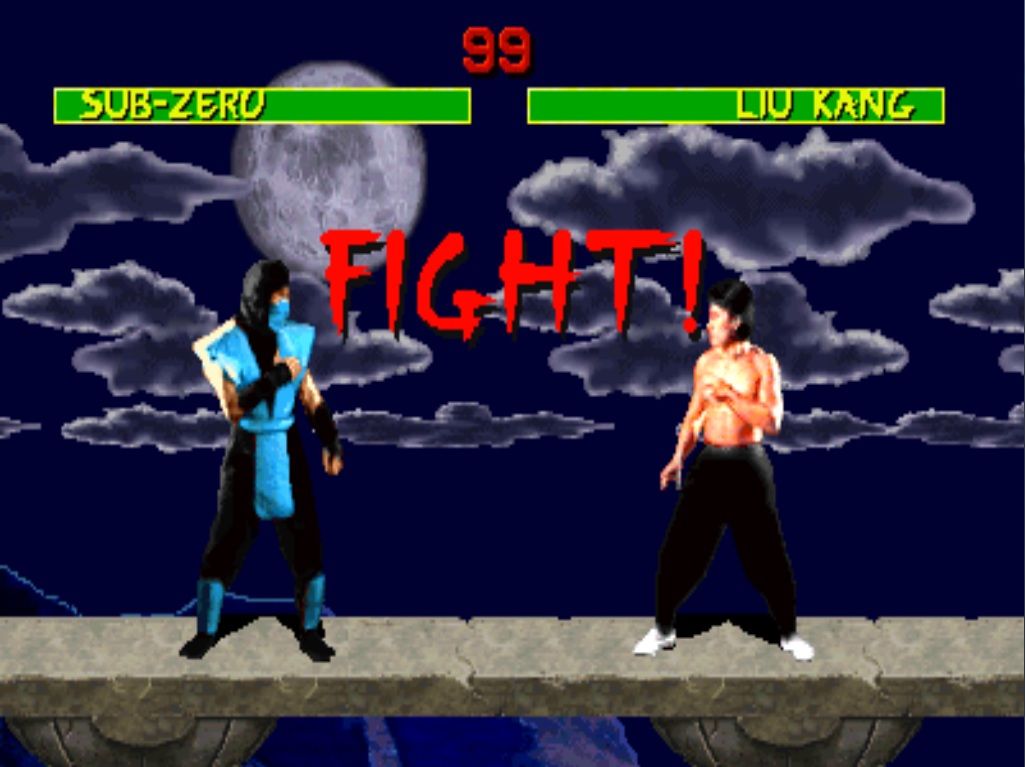
Mortal Kombat’s violent legacy started right here
In 1992, Midway released Mortal Kombat in arcades. Due to its overt violence, it quickly became a controversial game, eventually landing the entire game industry in court. Parents and politicians were concerned that such violence would hurt the youth. This eventually led to the ESRB, which put a specific rating on each game. But Mortal Kombat did more than just that; it opened the path to more violent games. Developers no longer needed to fear putting blood and gore in their games. However, in 1993, Nintendo was the strict grandmother of the game companies, so the port of Mortal Kombat on SNES was inferior to the Genesis version. We’ll discuss why in just a moment. Let’s see what makes this game so special, and also if the SNES version is any good.
There are seven playable characters to choose from. The roster is not bad, although Sub Zero and Scorpion are palette swaps and play very similarly. Unfortunately, the fighting feels stilted. The animation looks and plays choppy. To make things worse, the one player mode (a tournament) is brutally difficult, even on Easy. This is no doubt because this is an arcade port, and arcade games tend to be very hard in order to get more money from players. But at home, it just makes for a frustrating experience.

The controls work fine. Each fighter has a couple different combos, which work well. You also have to input a certain button configuration in order to do a fatality, which usually works fine, but some characters are harder than others.
The story goes something like this: seven combatants have gathered in Earthrealm to fight to the death in a tournament. Shang Tsung is in charge of the tournament, and the four-armed Goro is the champion. The fighter will have to defeat Goro and then best Shang Tsung to win the tournament. Sadly, the story is not told in the game (probably because it’s in the game manual). If you beat the main game, you get a text scroll of what happens to that character. It’s not very exciting, especially after what you went through to beat the game.

MK uses digitized graphics of real people, which lends some realism to the game. These were cool for the time, and even gave you the sense that you were fighting real characters. However, it doesn’t look very good anymore. In fact, the Mortal Kombat series would eventually move to regular graphics because they realized the digitized characters look quite awful.
The fighting aspect is typical of the time. However, what made MK so special was the blood and fatalities. The amount of blood flying off your opponent as you beat them senseless was quite ridiculous. And then, when those words “Finish Him” appeared on-screen, you could rip out their heart, or pull out their spine, or something else that your mom would abhor. But none of that mattered if you were playing the SNES version. This version changed the blood to grey sweat, and the fatalities were all nerfed dramatically. Some of them are still cool, but none of them are overtly violent like ripping out a spine. It’s a huge disappointment. As it stands, MK on SNES is just a bare bones port with all the good stuff changed. Because of this, the Genesis game would go on to sell better than this version.

The only presentation the game has to offer is the fatalities. Some are good, like Sonya’s, who blows a kiss of fire at her opponent and they burn up and turn into a skeleton. Cool. Others are lame, like Johnny Cage’s, in which he apparently kicks his opponent in the neck, and they fall over. If the fatalities were bloody and brutal, it would be exciting to watch them; instead, they’re really lame. Thanks, Nintendo.
There are plenty of difficulties to choose from. When you lose, you get to continue without any limit to continues (this is an arcade port, after all). So there’s a lot of replay value here if you want to beat it on all the difficulties, or if you want to beat the game with all the characters. There is also a two player mode. MK is a lot of fun when you’re beating the snot (uh, sweat) out of a friend. You can each pick one of the seven characters and then the game will automatically pick a stage to fight on. Unfortunately, if you both pick the same character, they look identical. Was it too much to change the colors?

The sounds are all typical smack and punch noises. The music is also underwhelming. In fact, you can choose to turn the audio off if you want. During fights, the music is often subdued and in the background. Most fighting games have loud music that enhances the fight, but not here. It was an interesting choice.
If you want to play the original MK, you would be better off playing the Genesis version (it pains me to admit this!). The game also does not hold up too well. The graphics are dated and the fighting is stilted, making for a sloppy port. This is very unfortunate. However, Nintendo would fix its mistakes for the sequel (say it with me, “We want blood!”).
Final Verdict: 3 Starts--It's Okay
Mortal Kombat’s legacy is the controversy surrounding the game. The blood, the gore, the horrified faces of mothers, the courtroom drama, and then the creation of the ESRB and the path widening for violence in games—that’s what Mortal Kombat accomplished. But the game itself, it’s not that good. It’s a typical fighting game, and if you strip out the awesome fatalities and the blood, it’s not special at all. And so it’s just average. But the series had to start somewhere, and it could only go up from here.








Comments